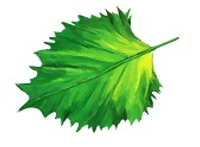
Joginder Nursery
Product details
The Allamanda plant, particularly the yellow variety, is known for its vibrant, eye-catching flowers and lush foliage. It's a popular choice for gardens and landscapes around the world due to its striking appearance and relatively easy care. In this article, we will explore the key aspects of the Allamanda plant, including its characteristics, care requirements, and how to grow and maintain it.
Allamanda is a genus of flowering plants in the dogbane family (Apocynaceae). Native to tropical regions of the Americas, particularly Brazil, Allamanda plants are widely grown as ornamental plants for their large, trumpet-shaped flowers and glossy green leaves. The yellow variety, Allamanda cathartica, is one of the most popular species due to its showy golden-yellow blooms.
Flowers: The yellow Allamanda produces stunning, bright yellow flowers that are trumpet-shaped and can be up to 4 inches (10 cm) in diameter. They bloom throughout the warm season, attracting pollinators such as bees and butterflies.
Leaves: The plant's leaves are shiny, dark green, and arranged in whorls along the stems. They are lance-shaped and can grow up to 6 inches (15 cm) long.
Growth: Allamanda cathartica is a fast-growing, evergreen vine that can reach heights of up to 10 to 20 feet (3 to 6 meters) if provided with a support structure.
Toxicity: It's important to note that all parts of the Allamanda plant are toxic if ingested, especially to pets and children. Care should be taken when handling the plant.
Light Requirements: Allamanda cathartica thrives in full sun, which helps promote abundant flowering. It can tolerate partial shade but may not bloom as profusely.
Soil and Water: The plant prefers well-draining soil that is rich in organic matter. It requires regular watering to keep the soil consistently moist, especially during the growing season.
Temperature and Humidity: Allamanda prefers warm temperatures and high humidity. It is not frost-tolerant, so it is best suited to USDA hardiness zones 10 and 11.
Fertilization: Fertilize the plant every 4 to 6 weeks during the growing season with a balanced, water-soluble fertilizer to encourage healthy growth and flowering.
Pruning: Prune Allamanda cathartica regularly to control its growth and shape. Pruning can also help stimulate new growth and encourage more blooms.
Pests and Diseases: The plant is generally resistant to pests, but it can occasionally be affected by spider mites or aphids. Keep an eye out for any signs of infestation and treat as necessary. Fungal infections may occur in overly wet conditions, so proper watering practices are essential.
The yellow Allamanda plant is a beautiful addition to any garden, with its vibrant flowers and lush foliage. With the right care, including proper sunlight, watering, and maintenance, this plant can thrive and provide a stunning display throughout the warm season. Keep in mind its toxicity and take necessary precautions when growing it in areas accessible to pets and children. Enjoy the tropical beauty of Allamanda cathartica in your garden or landscape!
Similar products